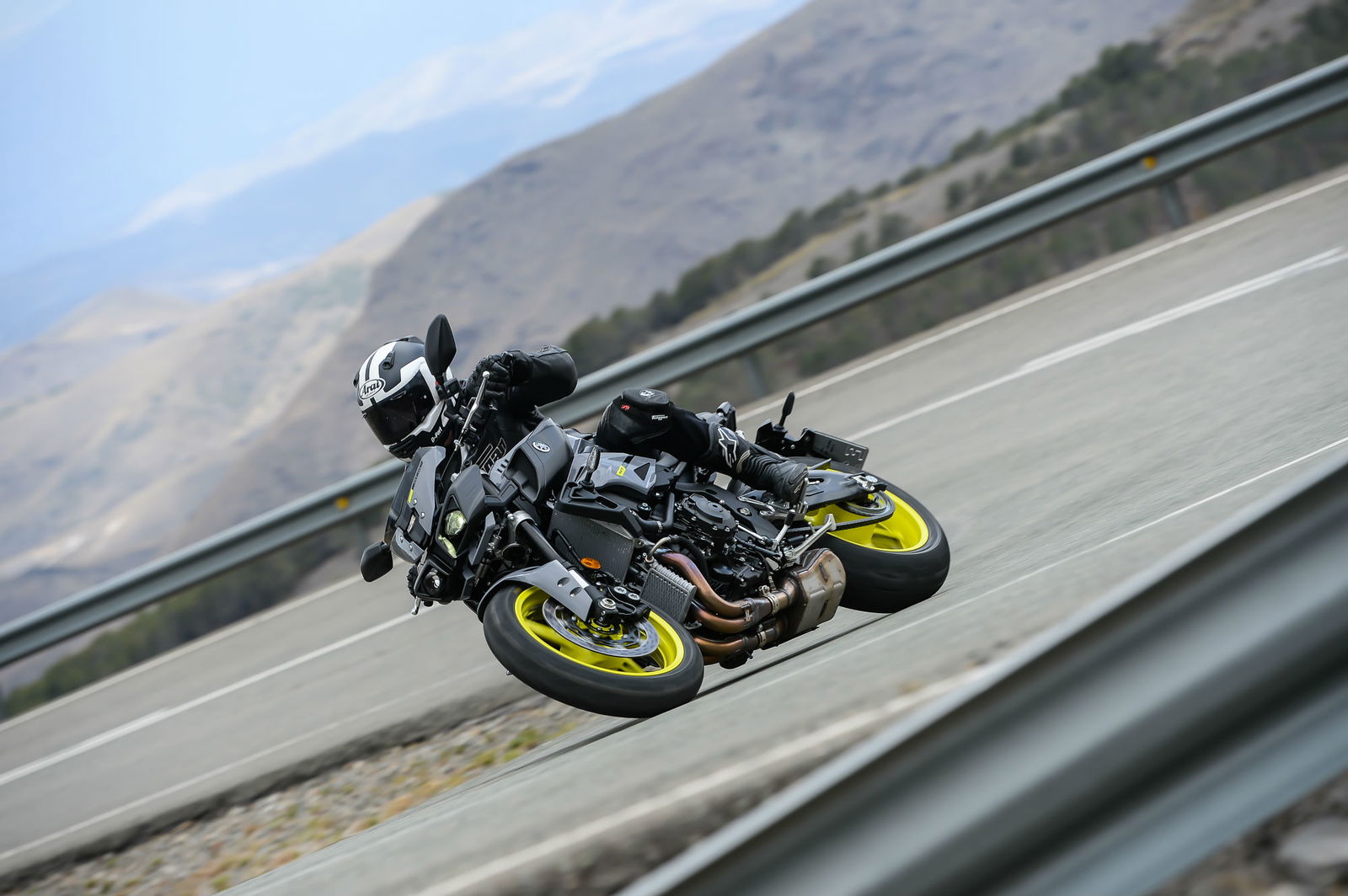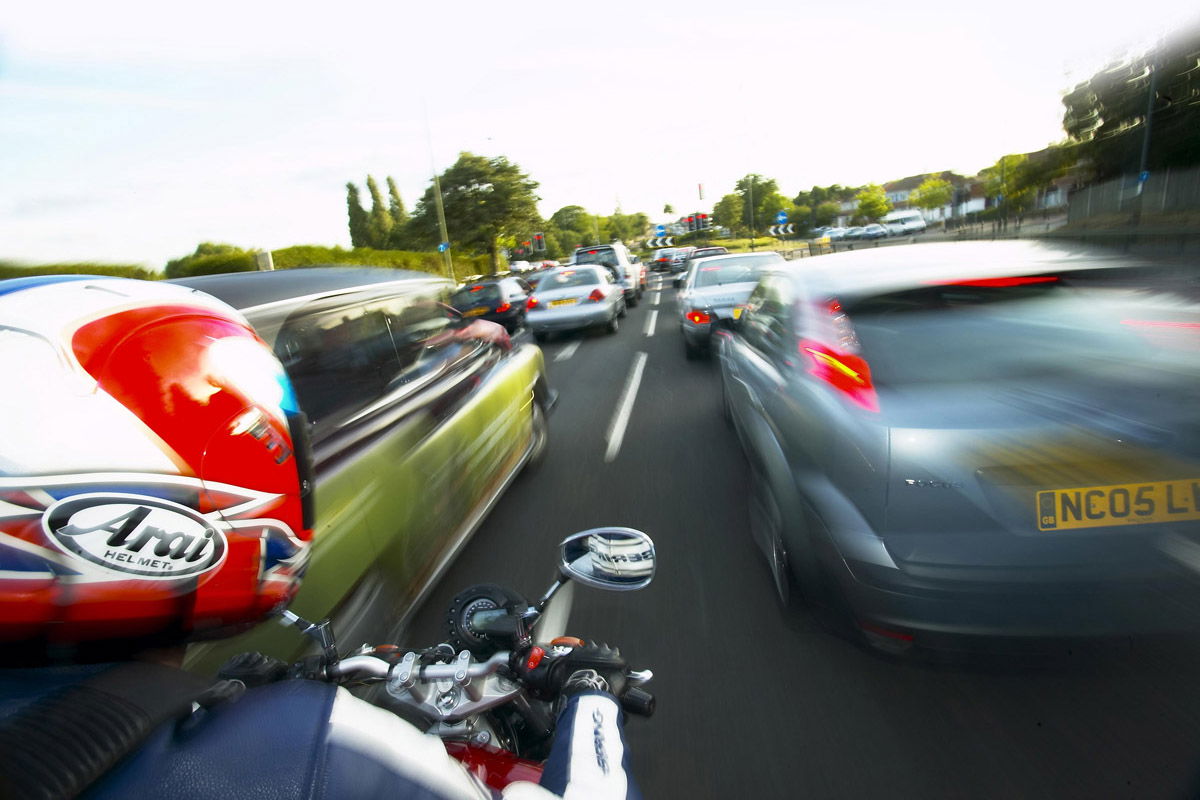How do I improve my wet weather riding? Tips for riding in the rain
Summer has brought us scorching hot temperatures but in good ol' Britain, it's also brought some heavy showers - don't get caught out with these top tips of riding in the wet
.jpg?width=1600&aspect_ratio=16:9)
We've had the hot weather, now it's the turn of summer storms to make their presence felt. Make sure you don't get caught out with these top tips for wet weather riding.
How do I know how much grip there is?
To understand this, we have to look at the road surface and what it’s made up of. For the most part that'll be good ole’ blacktop Tarmac, which is a granola type mix or Portland cement, sand, gravel or concrete, which is held together by tar. The tar is slippery and only there to hold the surface in place, it’s the stones that are the providers of the grip. The gaps between the stones also provide a route for water to escape if there is a small shower.
Jones and Childers report coefficients of friction of about 0.7 for dry roads and 0.4 for wet roads – dependant on the amount of rain, type of tyre and so on. So, 0.7 to 0.4 seems pretty big reduction in grip, because it is but that is assuming you are still travelling through the corner at the same speed as the dry-weather rider – and you are almost always much slower.
Can I ‘find’ more grip?
Yes absolutely! You might already do it without realising. Looking out for less-worn areas of the road is a good start. If the road is nice and flat, with fairly a fairly new surface, look out for areas where the rain water isn’t draining so well and pooling on the surface. It’s a good chance that this area of the road sees heavy use which could have compacted the stones in the Tarmac together more, preventing the water from draining. This smoother surface and the layer of water will have a greatly reduced friction rating compared to less worn Tarmac.
Avoiding white lines, road markings and manhole covers when cornering or braking in the wet is a must – although you shouldn’t really need to be told that. Another one to watch out for, especially around towns and cities, are induction loops set into the road in front of traffic lights. They are there to detect vehicles and help to trigger the lights but the tar that seals the wires in place is very slippery.
It’s worth changing your approach to a corner if it’s pissing down and maybe striking a compromise between the best line to safely see around the corner and the best line to avoid any of the hazards mentioned above. It’s also fair to assume that your speed will have reduced by at least 25 to 30%, meaning an optimum speed entry/apex/exit approach is not needed and a smoother, slower and more relaxed approach can be employed.
What are the other hazards to watch out for?
Roundabouts are the biggest slow-speed nemesis of the wet-weather motorcyclist – especially if there is a petrol station nearby! Most HGVs will be brimmed to the top, making the most of the time spent stationary. Quite often the first round about they come to will see the overflow pipe attached to the tank spilling diesel right where you don’t need it!
If you can see the rainbow-like sheen of the diesel on the road, you’re probably already riding over it, the best thing you can do is slow down gently. Don’t grab a bunch of brake, regardless of how good your ABS is, you’ll probably still end up on your arse.
One of the best ways to navigate a roundabout in the wet is by either carrying as little lean angle as possibly or by taking it as slowly as possible – possibly both. Get you visual checks in as early as possible and if it’s safe to do so, take up as much of the lane you are in as you can. Squaring the corner off in this way puts less stress through your tyres and means you can focus on what’s ahead and around you.
Are my tyres making a difference?
Yes, of course they are. They are the frontline item connecting you and the road, a decent set of fairly new sports touring tyres, with even wear will provide more grip and feel on a wet road. A worn out set of mis-matched hoops that have been stood in the full glare of the sun will become hard and wooden feeling, offering much less adhesion on the road, reduced feel and feedback.
Some super-sticky, road legal trackday rubber might seem like the best bet for hammering along your favourite twisty road on a sunny afternoon but on a wet Wednesday in Wishaw, they’ll barely get anywhere near their optimum temperature. With no heat in the carcass of the tyre they will offer a fraction of the grip a sport touring tyre should. The lack of deep grooves, designed to shift the water away from the road surface, will also put them at a disadvantage over more conventional road rubber.


